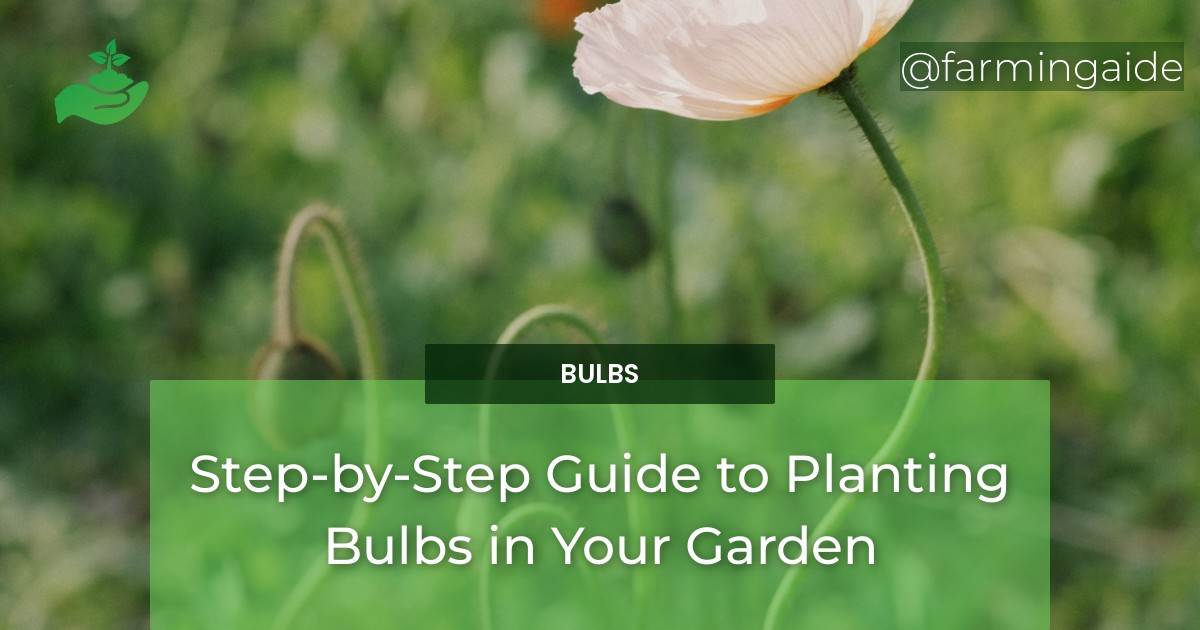Planting bulbs in your garden can add a splash of color and life to your outdoor space. However, if you’re new to gardening, the process might seem a bit daunting. Fear not! This step-by-step planting guide will walk you through everything you need to know to successfully plant bulbs in your garden and ensure they thrive.
Choosing the Right Bulbs
Determine the Best Time to Plant
Before you can plant your bulbs, it’s important to determine the best time to do so. This will vary depending on the specific type of bulb you’re planting, but in general, bulbs should be planted in either the spring or fall. Spring-blooming bulbs should be planted in the fall, while fall-blooming bulbs should be planted in the spring.Selecting High-Quality Bulbs
When selecting bulbs, it’s important to choose high-quality ones to ensure the best results. Look for bulbs that are firm and plump, with no signs of mold or damage. Bulbs that are soft or have moldy spots should be avoided.Choosing the Right Location
When choosing a location to plant your bulbs, it’s important to consider factors such as sunlight, soil quality, and drainage. Most bulbs prefer a location with full sun or partial shade and well-drained soil.Preparing the Soil
Clearing the Area
Before you can plant your bulbs, you’ll need to clear the area of any weeds or other plants. Use a garden hoe or tiller to remove any unwanted vegetation.Loosening the Soil
Once the area is cleared, use a garden fork or tiller to loosen the soil to a depth of at least 12 inches. This will help ensure that the soil is loose and aerated, which will aid in the growth and development of your bulbs.Adding Nutrients
To give your bulbs the best chance of success, it’s a good idea to add some nutrients to the soil. You can do this by mixing in some compost or a slow-release fertilizer.ALSO READ
Planting the Bulbs
Digging the Holes
When planting your bulbs, dig holes that are two to three times deeper than the height of the bulb itself. For example, if a bulb is two inches tall, dig a hole that’s four to six inches deep.Placing the Bulbs
Once you’ve dug your holes, place the bulbs in the holes with the pointed end facing up. Make sure to space the bulbs out evenly, leaving at least two to three inches between each one.Covering the Bulbs
After you’ve placed the bulbs in the holes, cover them with soil and gently press down to ensure they’re secure. Water the area thoroughly to help settle the soil.Post-Planting Care
Watering the Area
After planting your bulbs, it’s important to keep the area well-watered. Bulbs need consistent moisture to thrive, so make sure to water them regularly.Mulching the Soil
Mulching the soil around your bulbs can help retain moisture and regulate soil temperature. Apply a layer of mulch that’s two to three inches deep around the planted bulbs.Fertilizing the Area
To give your bulbs an extra boost, you can fertilize the area around them once or twice a year. Use a balanced, all-purpose fertilizer and follow the instructions on the package.Maintenance
Deadheading
As your bulbs begin to bloom, it’s important to deadhead them to encourage continued growth. Deadheading involves removing the spent flowers from the plant.Staking
If your bulbs become top-heavy or tall, they may require staking to prevent them from falling over. Use garden stakes or other support structures to keep your bulbs upright.Dividing Bulbs
Over time, your bulbs may begin to overcrowd each other, which can lead to stunted growth. To prevent this, you can divide your bulbs every few years. Dig up the bulbs and separate them into clumps, then replant in a new location.Troubleshooting
Pests and Diseases
Bulbs can be susceptible to a variety of pests and diseases, including aphids, mites, and fungal infections. Keep an eye out for any signs of damage or infestation and take appropriate measures to control the problem.Soil Issues
If your bulbs aren’t thriving, it may be due to issues with your soil. Poor drainage, nutrient deficiencies, and pH imbalances can all impact the growth of your bulbs. Consider getting a soil test to identify any issues and take steps to correct them.What Not to Do When Planting Bulbs in Your Garden?
When planting bulbs in your garden, there are growing bulbs mistakes to avoid. First, don’t plant the bulbs too shallow or too deep. Also, avoid planting bulbs in soil that doesn’t drain well. Lastly, refrain from overcrowding the bulbs, as this can impede their growth.


